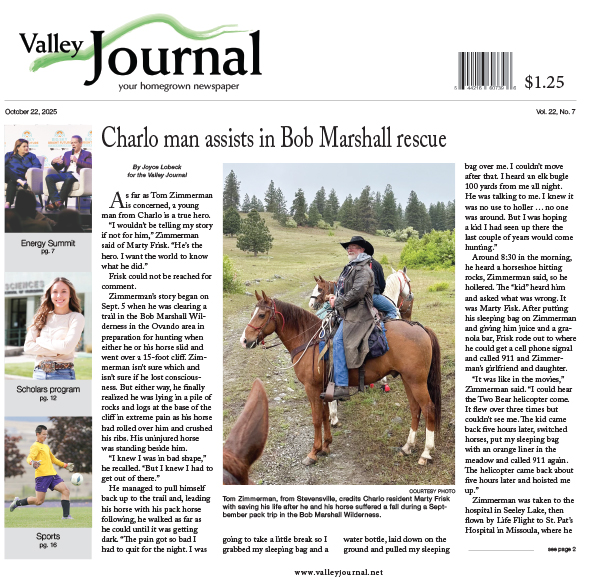Teachers learn to tackle mock school shooter
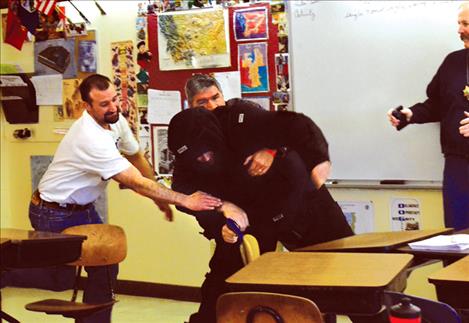
Karen Peterson
Teacher Lyle Cronk and Principal Dan Durglo practice taking down a mock intruder provided by Lake County Sheriff's Office.
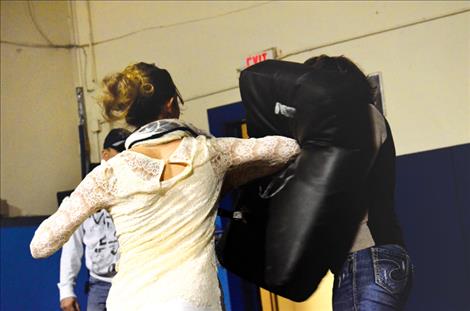
Karen Peterson
Teachers learn to fight to protect students from a school intruder.
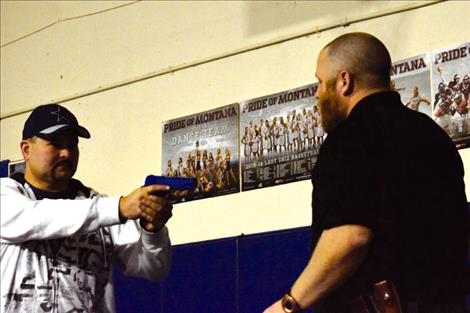
Karen Peterson
St. Ignatius Police Chief Matthew Connelly helps Officer Levi Read demonstrates how to grab a gun.
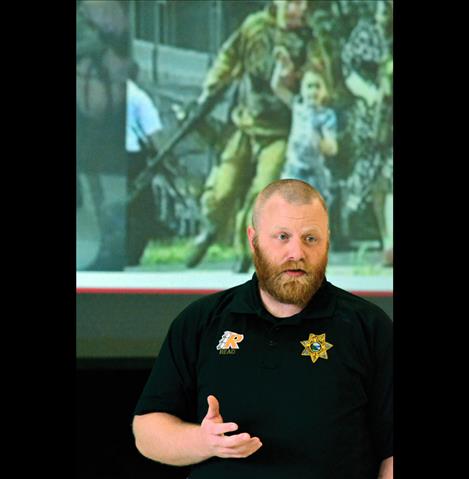
Karen Peterson
Lake County School Resource Officer Levi Read
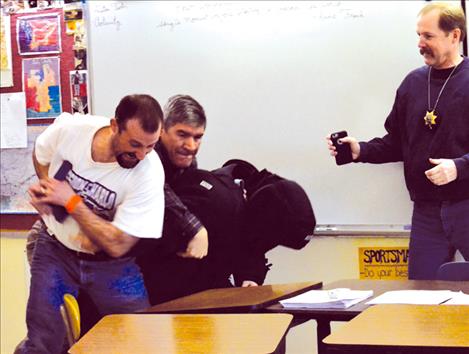
Karen Peterson
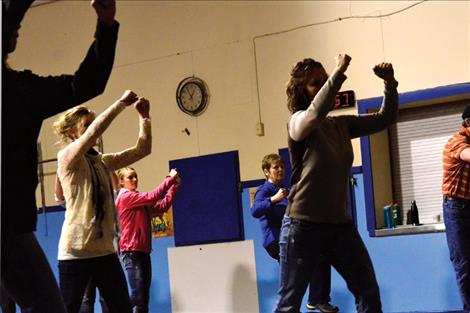
Karen Peterson
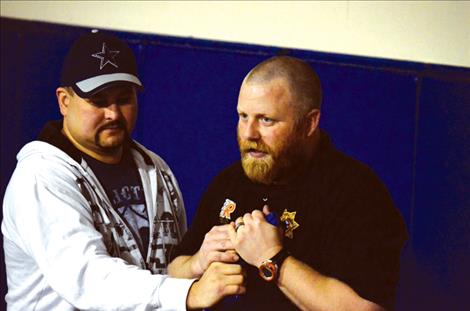
Karen Peterson
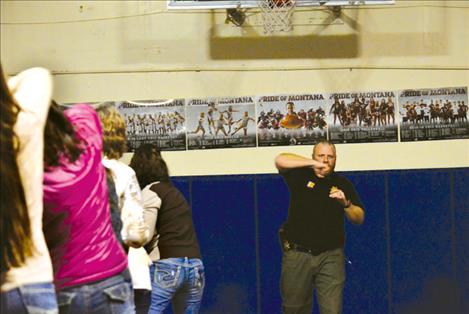
Karen Peterson
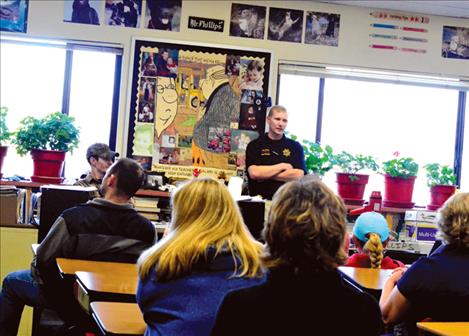
Karen Peterson
Issue Date: 2/3/2016
Last Updated: 2/8/2016 6:35:50 PM |
By
Karen Greene
Keep Reading!
You’ve reached the limit of 3 free articles - but don’t let that stop you.















